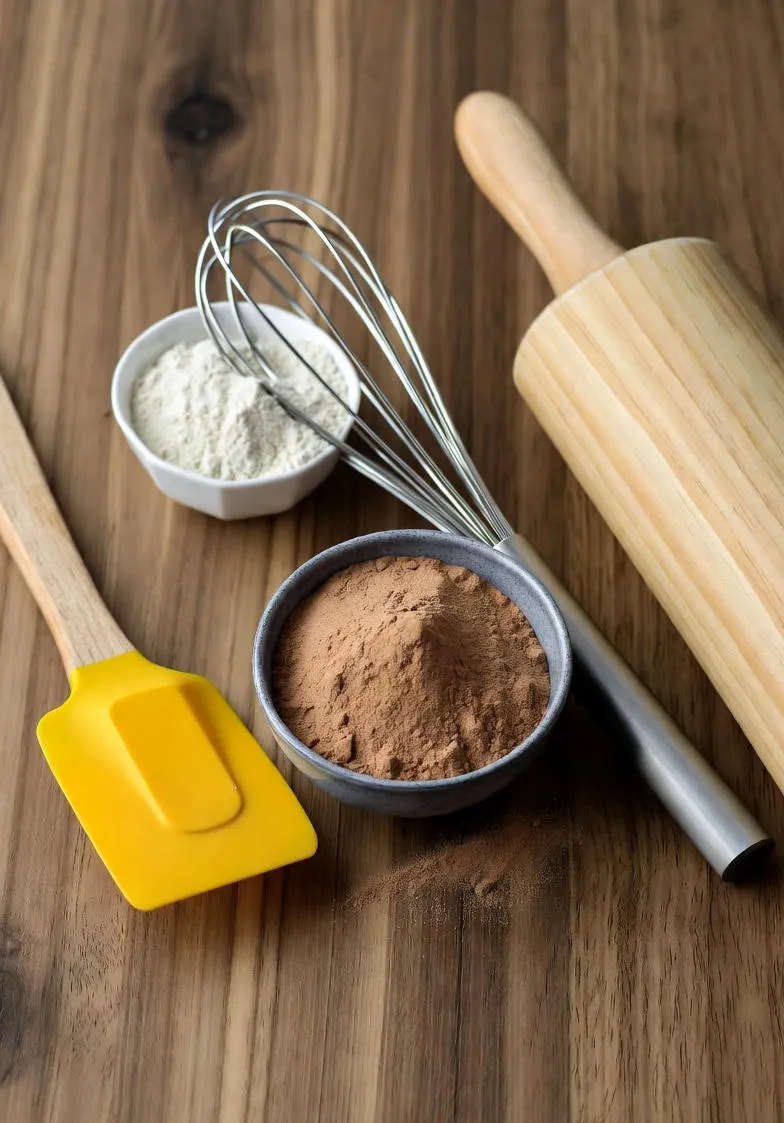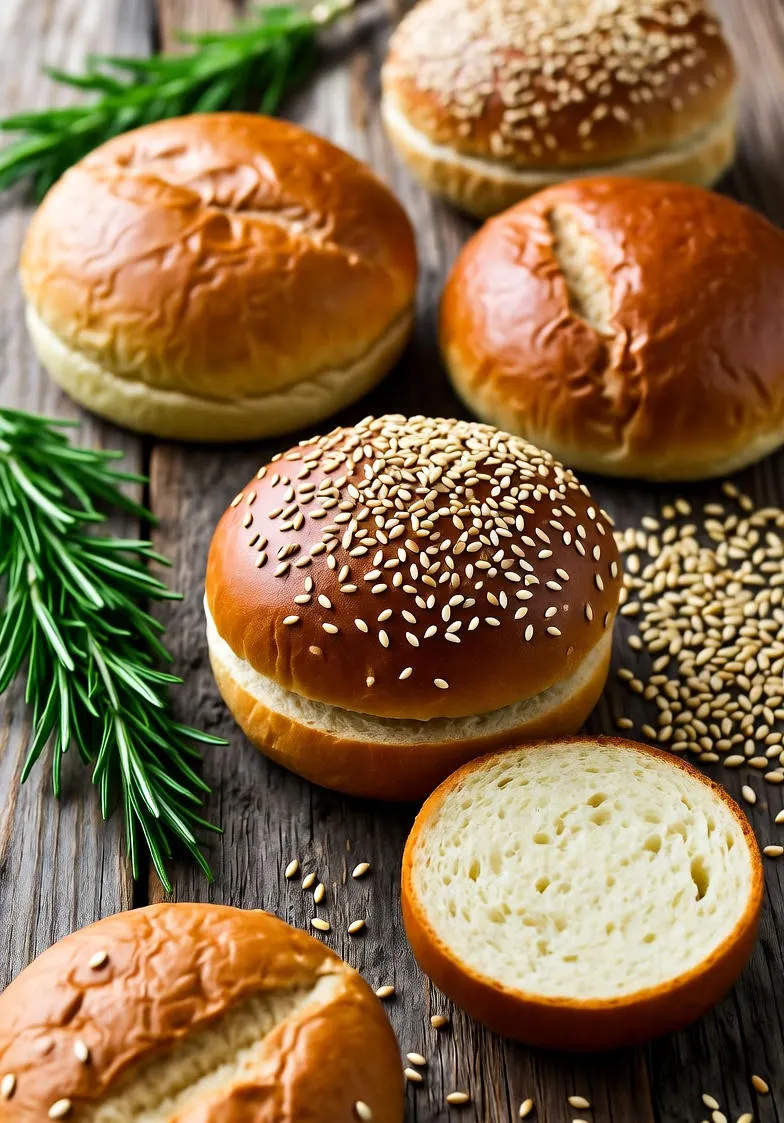Unlocking the Secrets to Perfect Gluten-Free Cake Baking
Discover expert secrets to baking moist, fluffy gluten-free cakes at home. From flour blends to mixing techniques, unlock tips for perfect results every time.

Introduction to Gluten-Free Cake Baking
Imagine sinking your fork into a moist, fluffy cake that tastes just as indulgent as its gluten-filled counterpart, but without the worry of digestive discomfort. For those embracing a gluten-free lifestyle, baking cakes can feel like a daunting challenge. Yet, with the right knowledge and techniques, creating bakery-worthy gluten-free cakes at home is entirely achievable. This guide dives deep into the secrets that transform novice bakers into confident creators of delectable treats. Whether you're baking for health reasons, allergies, or simply curiosity, these insights will elevate your skills and delight your palate.
Gluten, that elastic protein found in wheat, barley, and rye, gives traditional cakes their signature structure and chew. Without it, gluten-free bakers must rely on alternative flours and binders to mimic those qualities. But fear not—this isn't about settling for dense, crumbly results. It's about embracing innovation and discovering flavors that shine brighter in the absence of gluten. Let's explore the foundational elements that make gluten-free cake baking not just possible, but profoundly rewarding.
Understanding Gluten-Free Flours: The Building Blocks
The heart of any gluten-free cake lies in its flour blend. Unlike all-purpose wheat flour, which is a one-size-fits-all wonder, gluten-free flours vary wildly in texture, flavor, and functionality. Rice flour, for instance, offers a neutral base but can lead to a gritty mouthfeel if used alone. Almond flour brings nutty richness and moisture, ideal for denser cakes like brownies or pound cakes.
To achieve balance, most experts recommend a multi-flour blend. A classic combination might include sorghum flour for structure, tapioca starch for chewiness, and coconut flour for subtle sweetness and absorbency. Sorghum, with its mild corn-like taste, provides the backbone that wheat once did, while tapioca—derived from cassava root—acts as a natural thickener, preventing that dreaded gumminess.
Experimentation is key here. Start with store-bought blends like those from King Arthur or Bob's Red Mill, which are pre-formulated for cake success. But for the adventurous, crafting your own mix can be a game-changer. A simple ratio to try: 40% brown rice flour, 30% almond flour, 20% potato starch, and 10% xanthan gum. Xanthan gum, a powerhouse binder derived from fermented sugars, is the unsung hero that holds everything together, mimicking gluten's elasticity in tiny doses—about 1/2 teaspoon per cup of flour.
Choosing Flours for Different Cake Types
- Light and Airy Cakes: Opt for white rice flour and arrowroot powder to keep things delicate, perfect for sponge or angel food styles.
- Rich and Moist Cakes: Incorporate oat flour (certified gluten-free) or buckwheat for earthier depth, enhancing chocolate or carrot cakes.
- Nut-Based Delights: Hazelnut or walnut flours add sophistication to tortes and celebration cakes.
Always sift your flours to aerate them, reducing lumps and promoting even distribution. Store them in airtight containers away from light and heat to preserve freshness—gluten-free flours spoil faster due to their natural oils.
Essential Ingredients: Beyond the Basics
Flour is just the start; the true magic happens with complementary ingredients that compensate for gluten's absence. Eggs play a starring role, providing lift and structure through their proteins. In a gluten-free batter, use room-temperature eggs for better emulsification, or consider aquafaba (chickpea brine) for vegan alternatives—whip it to stiff peaks for ethereal meringues atop your cakes.
Buttermilk or yogurt adds tang and tenderness, breaking down starches for a softer crumb. For dairy-free bakers, coconut milk or almond yogurt works wonders. Sweeteners like brown sugar or honey not only add moisture but also feed the yeast-like reactions in baking soda, ensuring a proper rise.
Fats are non-negotiable for flavor and texture. Butter infuses richness, but in gluten-free baking, it can sometimes overwhelm delicate flours. Clarified butter (ghee) or coconut oil offers stability at high temperatures. For a lighter touch, applesauce or mashed banana can replace some fat while boosting natural sweetness and binding.
Leavening Agents: Getting the Rise Right
Baking powder and soda are your allies, but measure meticulously—gluten-free batters are more sensitive to imbalances. Double-acting baking powder releases gas in two stages: once when mixed and again in the oven, giving that crucial lift. Test freshness by mixing a teaspoon with hot water and vinegar; it should fizz vigorously. If not, it's time for a new tin.
In acidic recipes (think chocolate cake with cocoa), baking soda shines, reacting with buttermilk for a tender, domed top. A pro tip: incorporate leaveners into the dry ingredients evenly to avoid hot spots that cause uneven rising.
Baking Techniques: Precision Meets Patience
Temperature control is paramount in gluten-free baking. Ovens run hot, and without gluten's protective network, cakes can dry out quickly. Preheat thoroughly and use an oven thermometer—aim for 325°F (163°C) for most recipes, lower than traditional 350°F to allow gentle setting.
Mixing methods matter too. The reverse creaming technique—blending fats with dry ingredients first, then adding liquids—coats flour particles, reducing toughness. For chiffon-style cakes, fold gently with a spatula to preserve air bubbles from whipped eggs.
Pans are equally important. Lighter-colored aluminum conducts heat evenly, preventing over-browned edges. Grease and line with parchment, but skip flour dusting; opt for rice flour or spray to avoid clumping. Fill pans no more than two-thirds full to account for the batter's tendency to spread rather than climb.
Cooling and Storage Secrets
Resist the urge to unmold immediately—gluten-free cakes need time to set. Cool in the pan on a wire rack for 10-15 minutes, then invert onto parchment. For storage, wrap tightly in plastic to retain moisture; they stale faster than wheat-based cakes. Freeze unbaked batter in portions for fresh-baked convenience anytime.
Flavor Enhancements: Making It Irresistible
Gluten-free doesn't mean flavorless. Amplify with pure extracts—vanilla, almond, or citrus zests—to cut through any subtle flour notes. Spices like cinnamon or cardamom pair beautifully with nut flours, while espresso powder intensifies chocolate without overpowering.
Incorporate mix-ins mindfully: chocolate chips sink less in denser batters, but toss them in a bit of flour first. Fruits like berries release juices that can make cakes soggy, so macerate them in sugar beforehand and drain excess liquid.
Frostings and fillings elevate the ordinary to extraordinary. A Swiss meringue buttercream holds up well on crumbly layers, while ganache provides a glossy, forgiving finish. For fruit-based cakes, a simple whipped cream stabilized with gelatin ensures longevity.
Common Pitfalls and How to Avoid Them
Even seasoned bakers encounter hurdles. Overmixing develops excess starch, leading to gumminess—stir just until combined. Underbaking results in a raw center; use a toothpick test, but remember it might come out with more crumbs than batter.
Dryness is a frequent complaint, often from overbaking or absorbent flours like coconut. Counter it with extra liquid or a syrup soak post-bake: a simple mix of sugar, water, and liqueur brushed on warm layers locks in moisture.
Allergies extend beyond gluten, so source certified cross-contamination-free ingredients. Oats, for example, are naturally gluten-free but often processed with wheat—always check labels.
Troubleshooting Table
| Issue | Cause | Solution |
|---|---|---|
| Dense Cake | Insufficient leavening | Check expiration dates; add 1/4 tsp more baking powder |
| Gritty Texture | Coarse flours | Finely grind or sift multiple times |
| Sinking Center | Oven door opened too soon | Wait until last 10 minutes to check |
| Cracks on Top | High oven temp | Lower by 25°F and tent with foil |
Sample Recipe: Ultimate Gluten-Free Vanilla Cake
To put these secrets into practice, here's a foolproof recipe yielding a 9-inch layer cake.
Ingredients
- 2 cups gluten-free flour blend (sorghum, rice, tapioca)
- 1 tsp xanthan gum
- 1 1/2 tsp baking powder
- 1/2 tsp baking soda
- 1/2 tsp salt
- 1 cup granulated sugar
- 1/2 cup unsalted butter, softened
- 2 large eggs
- 1 tsp vanilla extract
- 1 cup buttermilk
Instructions
- Preheat oven to 325°F. Grease two 9-inch pans.
- Whisk dry ingredients in a bowl.
- Cream butter and sugar until light. Add eggs one at a time, then vanilla.
- Alternate adding dry mix and buttermilk, starting and ending with dry.
- Divide batter; bake 25-30 minutes until toothpick clean.
- Cool, then frost as desired.
This base adapts endlessly—swap vanilla for lemon zest or add cocoa for chocolate bliss.
Advanced Tips for the Seasoned Baker
Once basics are mastered, explore sourdough starters adapted for gluten-free (using rice flour) for tangy depth. Or try the tangzhong method: cook a starch slurry to gelatinize flours, yielding ultra-soft results akin to Japanese milk bread cakes.
Sustainable sourcing matters—opt for organic flours to minimize pesticide residues, especially for sensitive diets. Community forums like Gluten-Free Goddess offer endless inspiration and tweaks from real bakers.
Conclusion: Bake Without Boundaries
Gluten-free cake baking is an art of adaptation, where limitations spark creativity. Armed with these secrets—from flour wisdom to mixing mastery—you're equipped to craft cakes that rival any patisserie. Share your triumphs at family gatherings or quiet coffee breaks; each slice is a testament to possibility. Remember, the best cakes aren't defined by what they lack, but by the joy they bring. Happy baking!


